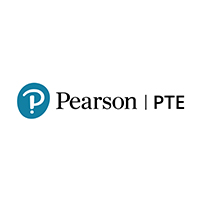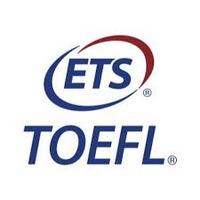VMC VIQ Scholarship Test
Register for Vidyamandir Intellect Quest. Get Scholarship and Cash Rewards.
Jammu and Kashmir State Board of School Education was established through legislation under the Jammu and Kashmir State Board of School Education Act, 1975. It conducts examinations for secondary and higher secondary levels. JKBOSE prescribes the courses of instruction, and scheme of studies, and prepares syllabi and textbooks for school education.
More About JKBOSE 10th Exams 2025
| Full Exam Name | Jammu and Kashmir State Board of School Education 10th Examination |
| Short Exam Name | JKBOSE 10th |
| Conducting Body | Jammu and Kashmir State Board of School Education |
| Frequency Of Conduct | Once a year |
| Exam Level | Matriculate |
| Languages | English +2 more |
| Mode Of Application | offline |
| Mode Of Exam | offline |
| Exam Duration | 3 Hours |
JKBOSE 10th Jammu and Kashmir State Board of School Education 10th Examination (session 2025)
Given below is the exam pattern of JKBOSE 10th exams 2025. All papers carry a maximum of 80 marks and are of 3 hours duration.
English subject has the following sections:
Hindi-
The JKBOSE 10th Hindi paper will carry 80 marks weightage for the theory exam, while the internal assessment will carry 20 marks.
Maths-
The question paper consists of 34 questions divided into four sections A, B, C, D. Section A contains 12 multiple choice type questions, first 8 (1-8) of which carry mark each, next 4 (9-12) carry 2 marks each Section B contains 7 questions 2 marks each, Section C contains 10 questions of 3 marks each and Section D contains 5 questions of 4 marks each.
Science
The JKBOSE 10th theory paper of Science shall have 80 marks spread over one single question paper containing three sections: Section – I based on the syllabus of Physics (26 marks) and Section -II based on the syllabus of Chemistry (26 marks) and Section – III based on the syllabus of Biology (28 marks).


English: Unit 06
Mathematics: Unit 01
Mathematics: Unit 02
Mathematics: Unit 03
Mathematics: Unit 04
Mathematics: Unit 05
Mathematics: Unit 06
Mathematics: Unit 07
Social science-India and the contemporary world II (History): Unit 01
Social science-India and the contemporary world II (History): Unit 02
Social science-India and the contemporary world II (History): Unit 03
Social science-India and the contemporary world II (History): Unit 04
Social science-Contemporary India II (Geography): Unit 01
Social science-Contemporary India II (Geography): Unit 02
Social science-Contemporary India II (Geography): Unit 03
Social science-Contemporary India II (Geography): Unit 04
Social science-Contemporary India II (Geography): Unit 05
Social science-Democratic politics II (Political science): Unit 01
Social science-Democratic politics II (Political science): Unit 02
Social science-Democratic politics II (Political science): Unit 03
Social science-Democratic politics II (Political science): Unit 04
Social science-Democratic politics II (Political science): Unit 05
Social science-Democratic politics II (Political science): Unit 06
Social science-Economics, disaster management, and road safety education: Unit 01
Social science-Economics, disaster management, and road safety education: Unit 02
Social science-Economics, disaster management, and road safety education: Unit 03
Social science-Economics, disaster management, and road safety education: Unit 04
Science-Physics: Unit 01
Science-Physics: Unit 02
Science-Physics: Unit 03
Science-Physics: Unit 04
Science-Physics: Unit 05
Science-Chemistry: Unit 01
Science-Chemistry: Unit 02
Science-Chemistry: Unit 03
Science-Chemistry: Unit 04
Science-Chemistry: Unit 05
Science-Biology: Unit 01
Science-Biology: Unit 02
Science-Biology: Unit 03
Science-Biology: Unit 04
Science-Biology: Unit 05
Science-Biology: Unit 06
Computer science: Unit 01
Computer science: Unit 02
Computer science: Unit 03
Computer science: Unit 04
Health and physical education: Unit 01
Health and physical education: Unit 02
Health and physical education: Unit 03
Health and physical education: Unit 04
Health and physical education: Unit 05
Health and physical education: Unit 06
Health and physical education: Unit 07
Art education: Unit 01
Art education: Unit 02
Art education: Unit 03
Art education: Unit 04
Painting: Unit 01
Art and drawing: Unit 01
Art and drawing: Unit 02
Art and drawing: Unit 03
Art and drawing: Unit 04
Music: Unit 01
Home science: Unit 01
Home science: Unit 02
Home science: Unit 03
Home science: Unit 04
Home science: Unit 05
Home science: Unit 06
Home science: Unit 07
Home science: Unit 08
Students who will be appearing for the JKBOSE 10th exams 2025 must go through and follow the valuable preparation tips to ace the exam:
01912582240 , 01912581502


JKBOSE Class 10th admit card will be released in January 2025, on the official website.
Students should appear for the exam at the exam centre mentioned on their admit card.
33% marks are the minimum passing marks.
The practical exam dates will be intimated to the students by the respective school authorities.
Admit Card Date
04 Oct, 2024 - 29 Nov, 2024
Application Date
07 Oct, 2024 - 22 Nov, 2024
Application Date
07 Oct, 2024 - 19 Nov, 2024
Application Correction Date
08 Oct, 2024 - 27 Nov, 2024
Application Date
22 Oct, 2024 - 30 Nov, 2024
Application Date
28 Oct, 2024 - 18 Nov, 2024
Exam Date
06 Nov, 2024 - 22 Nov, 2024
Exam Date
27 Nov, 2024 - 27 Nov, 2024
Exam Date
03 Dec, 2024 - 03 Dec, 2024
Exam Date
20 Dec, 2024 - 20 Dec, 2024
Others
29 Dec, 2024 - 29 Dec, 2024
Hello,
For Class 10 CBSE Board exams, focus on the following subjects: English, Hindi, Social Science, and Science. In English, concentrate on Reading Comprehension and Grammar, and work on improving your Vocabulary and Sentence Formation skills. Additionally, enhance your Writing Skills to excel in the exam.
In Hindi, thoroughly read and understand Hindi Literature and Grammar. About 20-25% of the questions will be from Grammar, so practice rules and exercises. Focus on Literature and Poetry to score well.
For Social Science, prepare detailed notes for History, Geography, Economics, and Political Science. Stay updated on Current Events and practice Map Reading. Reviewing previous year's question papers will also help.
In Science, clarify concepts in Physics, Chemistry, and Biology. Practice Numerical Problems and Practical Exercises to strengthen your understanding. Creating Diagrams and Flowcharts will also aid in retention.
To excel overall, manage your time effectively and study the syllabus thoroughly. Solve previous year's question papers and sample papers to gauge your preparation. Regular revision will boost your confidence, leading to better performance.
The exam pattern consists of 100-mark papers for each subject, with a 3-hour time duration. Stay focused, and with consistent effort, you'll achieve excellent results. Best of luck for your exams!
Hello Aspirant , Hope your doing great . As per your query , there was different state model papers of 10th class . for you which state 10th class model paper you want.
Hello,
Answering your question, first of all you need to mention the exam in which you appeared and scored 499 marks, only then an accurate answer can be given to your question. While posting a question, please keep in mind that your question should have enough information in order for the question to be answered.
Hello aspirant,
The CBSE sample paper for class 10 for the academic year 2024 has been made available by the Central Board of Secondary Education. The CBSE sample question papers for class 10 have been made available, along with the marking guidelines for each subject. You may download these CBSE class 10th example papers 2024 from cbseacademic.nic.in, the organization's official website.
Alternatively you can also download question paper by visiting our website by clicking on the link given below.
https://school.careers360.com/boards/cbse/cbse-class-10-sample-papers
Thank you
Hope this information helps you.
Hi,
According to the Central Board of Secondary Education (CBSE) new rule, if a student fails in any one of the three elective subjects -- Science, Mathematics and Social Science), then the failed subject will be replaced by the 'Skill Subject (offered as a 6th additional subject).
According to new cbse pattern (you have to score 33/100 to pass as before) your term 1 & term 2 + practical marks will be added for your final numbers for marksheet. Then your final results will be sum of term 1 &2 and practical. So don't worry even if you fail in term 1 , you can do hardwork for term two. Because you don't have to pass each term individually. You have to pass in total of TERM-1&2 which you can easily do. And you know out 100 , 20 marks of practical , you just have to score 15 marks total in term 1&2 in theory paper to pass. But work hard you can score good , better than passing number.
Hope this helps.
Register for Vidyamandir Intellect Quest. Get Scholarship and Cash Rewards.
As per latest 2024 syllabus. Physics formulas, equations, & laws of class 11 & 12th chapters
As per latest 2024 syllabus. Chemistry formulas, equations, & laws of class 11 & 12th chapters
Accepted by more than 11,000 universities in over 150 countries worldwide
Register now for PTE & Unlock 20% OFF : Use promo code: 'C360SPL20'. Valid till 30th NOV'24! Trusted by 3,500+ universities globally
As per latest 2024 syllabus. Study 40% syllabus and score upto 100% marks in JEE